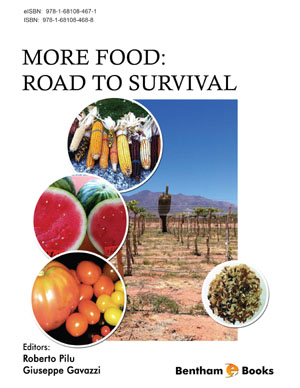Abstract
Doubling agricultural production will be essential by 2050 to satisfy the demand of food of a constantly growing population, but climate change brings a lot of uncertainty and complexity to this challenge for agriculture. One of the most important changes that must be addressed is the increase in atmospheric [CO2], which has increased from approximately 280 ppm in pre-industrial times to about 400 ppm nowadays and will further increase to values of 470–570 ppm by 2050 depending on the climate scenario (IPCC Synthesis report, Climate Change 2007). Although this increase in [CO2] is expected to have a positive and significant effect on C3 crops production, it is counteracted by the rise in temperature and the higher evaporative demand, with the increased risks for drought and heat likely to be progressive in all regions of our planet. As a matter of fact, the average stimulation of C3 leaf photosynthesis under field conditions at elevated [CO2] has been reported to be only 14% on average across FACE (550–600 ppm in Free Air CO2 Enrichment) experiments, much lower than the expected increase of 38%. Down-regulation of photosynthesis can be ascribe to multiple factors. These include the limited sink strength of the plants and the consequent accumulation of inhibitory photo-assimilates, the “hysterical” behavior of photosynthetic organisms to excess illumination, by either triggering EED (Excess Energy Dissipation) beyond the level effective for photo-protection or retaining a relevant fraction of quenching for extended periods after return to limiting light conditions, and the complex and multi-factorial network that controls CO2 fixation and carbon allocation. Here we describe the genetic constraints that limit yield potential and prevent it from being realized on the farm, in order to improve the understanding of plant responses under elevated [CO2], and provide tentative biotechnological solutions to overcome the crop yield limitations. It is worth noting that the huge improvements in agricultural production gained during the ‘Green Revolution’ were not directly related to manipulation of photosynthesis, therefore its modification remains an unexplored target for crop improvement.
Keywords: Dark phase efficiency, Improvement strategies, Light phase efficiency, Photosynthesis, Yield potential.






















